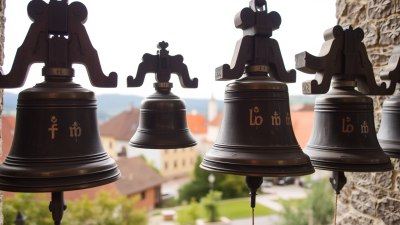Why hotel pillows are either too soft or way too firm
Explore the reasons behind the varying softness and firmness of hotel pillows.

When staying in a hotel, guests often notice a common trait: the pillows can be either too soft or far too firm. This observation can lead to an uncomfortable night's sleep and dissatisfaction during an otherwise enjoyable stay. This article delves into the reasons behind this phenomenon, examining the types of pillows hotels use, their design choices, and the impact on guest comfort.
Hotels are often faced with the challenge of catering to a diverse clientele with varying preferences for sleep comfort. Some guests prefer a soft, plush pillow that cradles the head, while others might favor a firmer support system. Finding the perfect balance can be difficult, resulting in the seemingly extreme choices available.
The Types of Pillows Used in Hotels
Typically, hotels use a variety of pillows to ensure they have options available. The most common types include down, feather, polyester, and memory foam. Each type provides a different level of comfort and support.
1. Down Pillows: These are feather-filled pillows that are usually softer and offer a luxurious feel. They tend to conform to the shape of the head and neck but may not provide enough support for guests who prefer a firmer pillow.
2. Feather Pillows: Similar to down, these pillows also derive from birds but tend to be firmer than down pillows due to the addition of larger feather quills. They provide more support but can still be perceived as too soft by some.
3. Polyester Pillows: These are often used in budget hotels due to their affordability. They can come in various firmness levels but may lack the longevity and luxury feel of down or feather pillows.
4. Memory Foam Pillows: These conform to the shape of the head and neck, offering firm support. However, they may feel too rigid for guests accustomed to softer pillows.
The Impact of Costs and Maintenance
Cost is another significant factor influencing pillow choice. Hotels often operate within strict budget constraints, which can affect the quality of pillows they provide. Higher quality pillows, such as those made from down or memory foam, are typically more expensive and may not fit the budget of every hotel, especially budget hotels. As a result, these establishments might rely more on polyester-filled pillows, which offer a less luxurious experience.
Additionally, pillow maintenance plays a vital role. Hotels need to ensure their pillows remain clean and fresh for each new guest. While down and feather pillows can provide a soft and luxurious touch, they require special care, including regular cleaning and fluffing. Meanwhile, polyester pillows can be easier to maintain, leading to their prevalence in many budget and mid-range hotels.
Guest Demographics and Preferences
The target demographic of a hotel can also influence pillow types. Luxury hotels often invest in a wider range of pillow styles to cater to their affluent clientele, who may have specific preferences. Conversely, budget hotels may focus on cost-efficiency, leading to a more uniform pillow type that does not cater to diverse preferences.
Interestingly, research shows that the perception of comfort can be subjective. A pillow that feels perfect for one guest may be perceived as too soft or too firm by another. This subjectivity complicates the selection process for hotels, making it challenging to choose the right mix of pillow types to satisfy all guests.
The Comfort Equation
Pillow firmness and softness contribute to a guest's overall sleeping experience, which is critical for hotel satisfaction. Many modern hotels now offer additional services, such as pillow menus, allowing guests to choose their preferred pillow type before check-in. This can range from soft down alternatives to firmer options for optimal support. This practice not only enhances guest satisfaction but can also be a key differentiator for hotels in a competitive market.
Moreover, the revolution in sleep technology has introduced innovative pillows that adjust to sleeping positions, reducing cervical spine strain, and improving overall quality of sleep. As hotels keep up with trends, they may find ways to provide more options without significantly increasing costs.
The Science Behind Pillow Selection
The science of sleep and the study of ergonomics play essential roles in determining pillow firmness. Many factors contribute to what makes a pillow ideal for sleep, such as sleeping position, body weight, and personal preference:
1. Sleeping Position: Side sleepers generally require more support, which can make a firm pillow ideal. Conversely, back or stomach sleepers often prefer a softer pillow that allows their heads to sink in without pushing their necks out of alignment.
2. Body Weight: Heavier individuals may compress a pillow more than lighter individuals, affecting how soft or firm it feels. Thus, hotels catering to a diverse guest list must find an array of pillows that consider these variations.
3. Personal Preference: Individual preferences will always vary, making it impossible to satisfy every guest with a single pillow type. Some may prioritize the softness of down pillows, while others find comfort in the swelling of memory foam against their neck.
Adjusting to Trends and Innovations
The hotel industry continues to evolve with trends in guest comfort and technology advancements. As the demand for improved sleep quality increases, hotels are investing in better quality pillows and sleep accessories. Luxury hotels are increasingly implementing pillow menus and customizable sleep experiences, allowing guests to have more control over their sleep environment.
Furthermore, some hotels are beginning to partner with sleep experts and therapists to develop better pillow options tailored to various sleeping styles and preferences. As sleep technology advances, hotels may adopt innovative materials that respond to body heat, weight, and position, offering tailor-made comfort to every guest.
Ultimately, the selection of hotel pillows is a complex issue influenced by cost, guest preferences, and the ever-changing landscape of sleep science. By understanding these dynamics, hotels can better meet the needs of their guests, creating an environment conducive to restful sleep.











